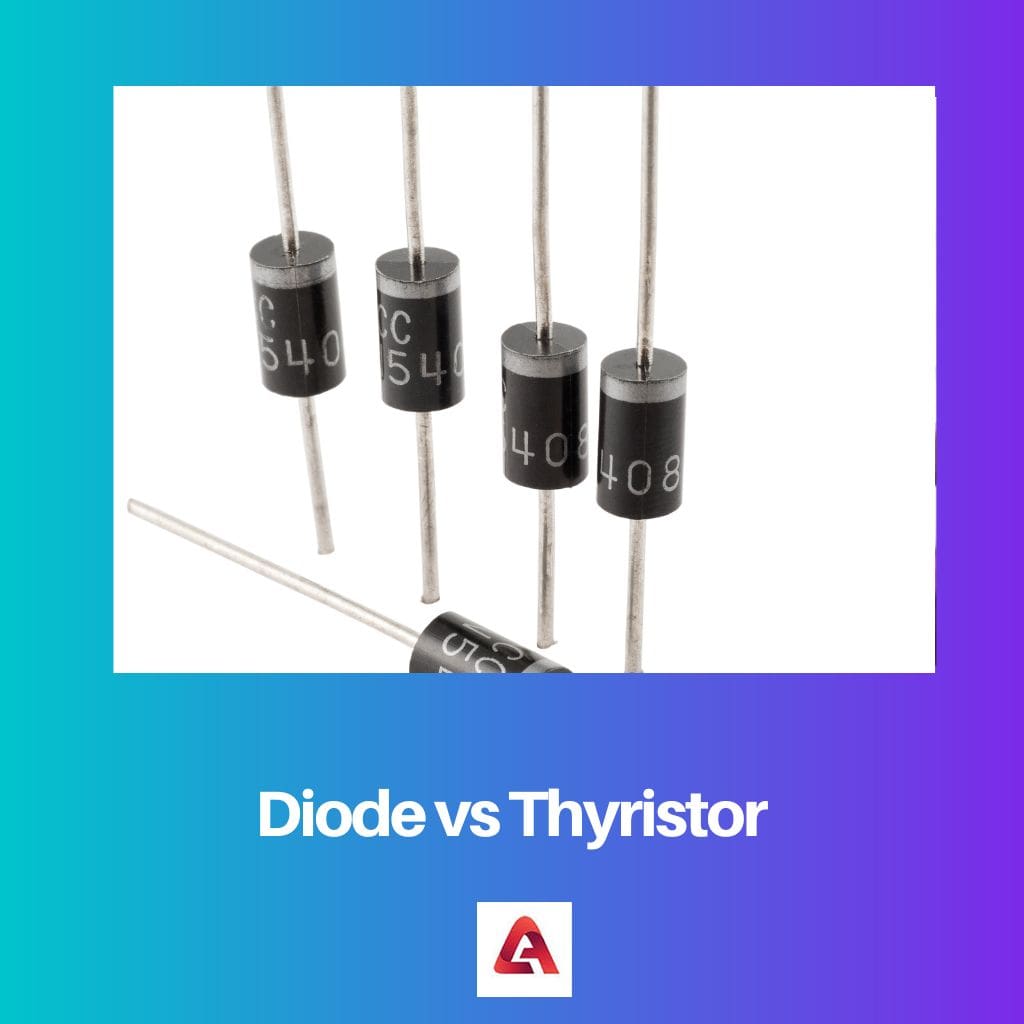Key Takeaways
- Diodes allow current flow in one direction, while thyristors can control current flow in both directions.
- Thyristors are more complex than diodes, requiring a gate signal to control their functionality.
- Diodes find applications in various devices like rectifiers and voltage regulators, whereas thyristors are used in power control systems and motor drives.

What is Diode?
A diode is a semiconductor gadget that goes about as a one-way switch for current. It permits the current to stream effectively in one direction and limits the current from flowing the other way. Diodes are precious parts and are broadly utilized in all electronic parts.
Diodes are also called rectifiers since they change the flowing current (ac) into direct current (dc). Diodes are used by their sort, voltage, and current limit.
When a negative charge is applied to the n-side, and a positive to the p-side, electrons ‘get around’ this intersection, and current streams in a single heading, as it were.
Diodes are available in different designs. When a diode permits the current stream, it is forward-one-sided, and when a diode is opposite one-sided, it goes about as an encasing and doesn’t allow current to flow.
Another central property of a diode is transmitting electric flow in just a single direction. When the cathode is negatively charged compared to the anode at a voltage more significant than a specified value, it is called forward current, and then the current moves through the diode.

What is Thyristor?
A Thyristor is a four-layered and three-intersection semiconductor exchanging gadget. It has three terminals anode, cathode, and entryway. A thyristor is a unidirectional gadget like a diode that flows the current in one direction. It comprises three P-N intersections in series, all things finalized into four layers.
The entryway terminal is used to set off the thyristor by giving a little voltage to this terminal, which we additionally call the door setting off technique to turn on the thyristor. Thyristors are additionally switching gadgets like semiconductors. Thyristors are the little electronic part that impacted the world today; we can find them in every electronic gadget like televisions, mobiles, workstations, number crunchers, headphones, and so forth.
While they are versatile and flexible, it does not mean they can be used in every application. They can be used to enhance and exchange devices and carry higher currents. To overcome this large number of issues Thyristors, are used.
Thyristor incorporates many sorts of switches; some of them are SCR (Silicon Controlled Rectifier) and IGBT (Protected Door Controlled Bipolar Semiconductor).
In general, SCR (silicon-controlled rectifier ) and Thyristor are utilized in opposite directions, although SCR is an example of a Thyristor.

Difference Between Diode and Thyristor
- A diode is a two-layer gadget having P and N ends. In comparison, a thyristor is a four-layer semiconductor gadget framed by a substitute course of action of p and n-type material.
- As there are two layers in the diode, a single intersection exists in the event of a diode, whereas because of 4 layers, the thyristor has three intersections.
- Diodes can perform their work even at low voltage, whereas Thyristors cannot work at low voltage.
- The cost of a diode is comparatively lesser than the Thyristors as they need more power to operate.
- Thyristors can handle the power more effectively when compared to Diodes.
Comparison Between Diode and Thyristor
- https://ieeexplore.ieee.org/abstract/document/25131/
- https://ieeexplore.ieee.org/abstract/document/9268457/
